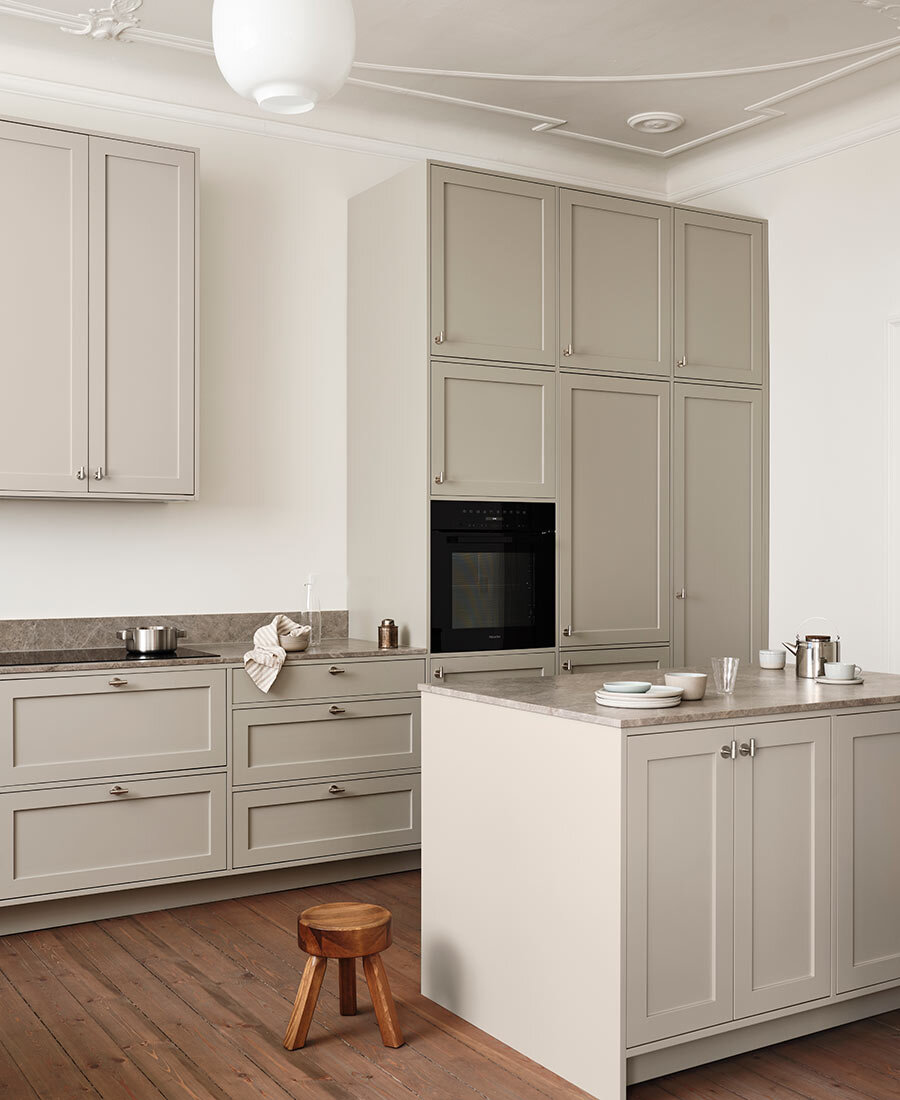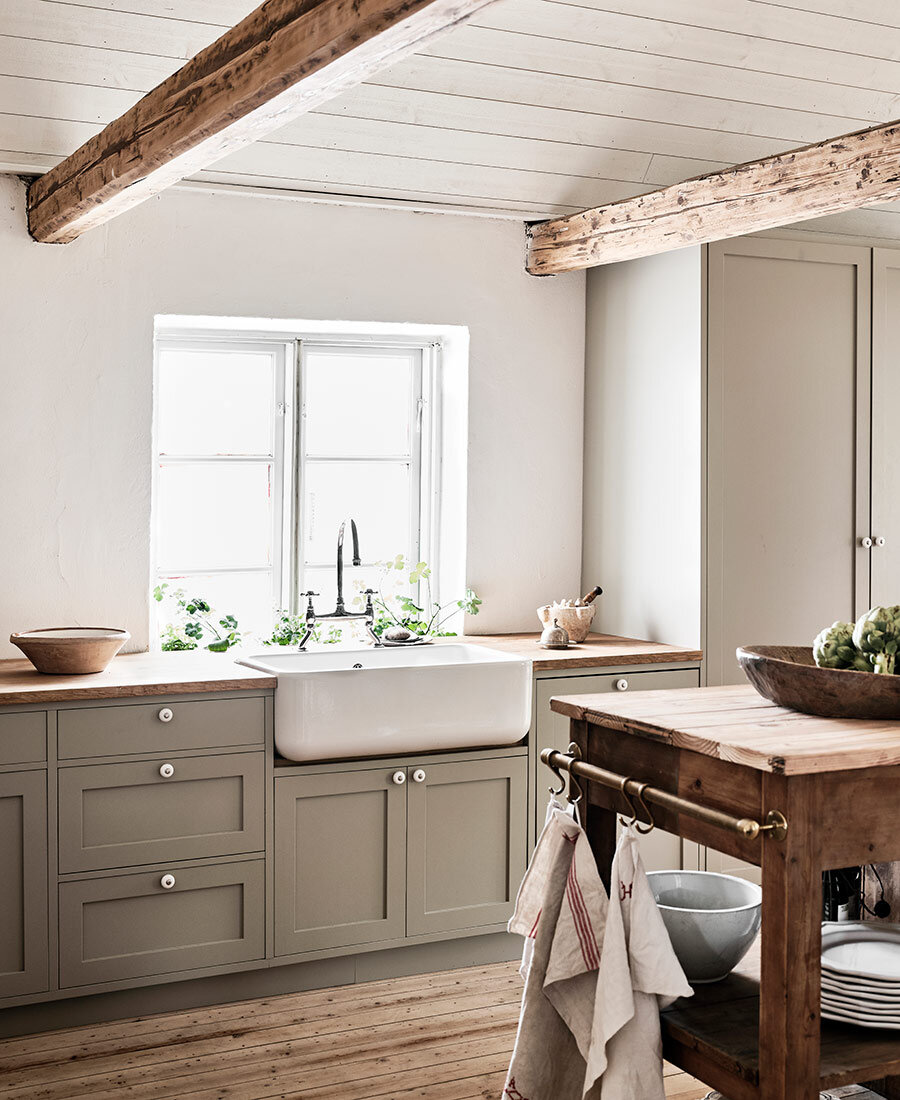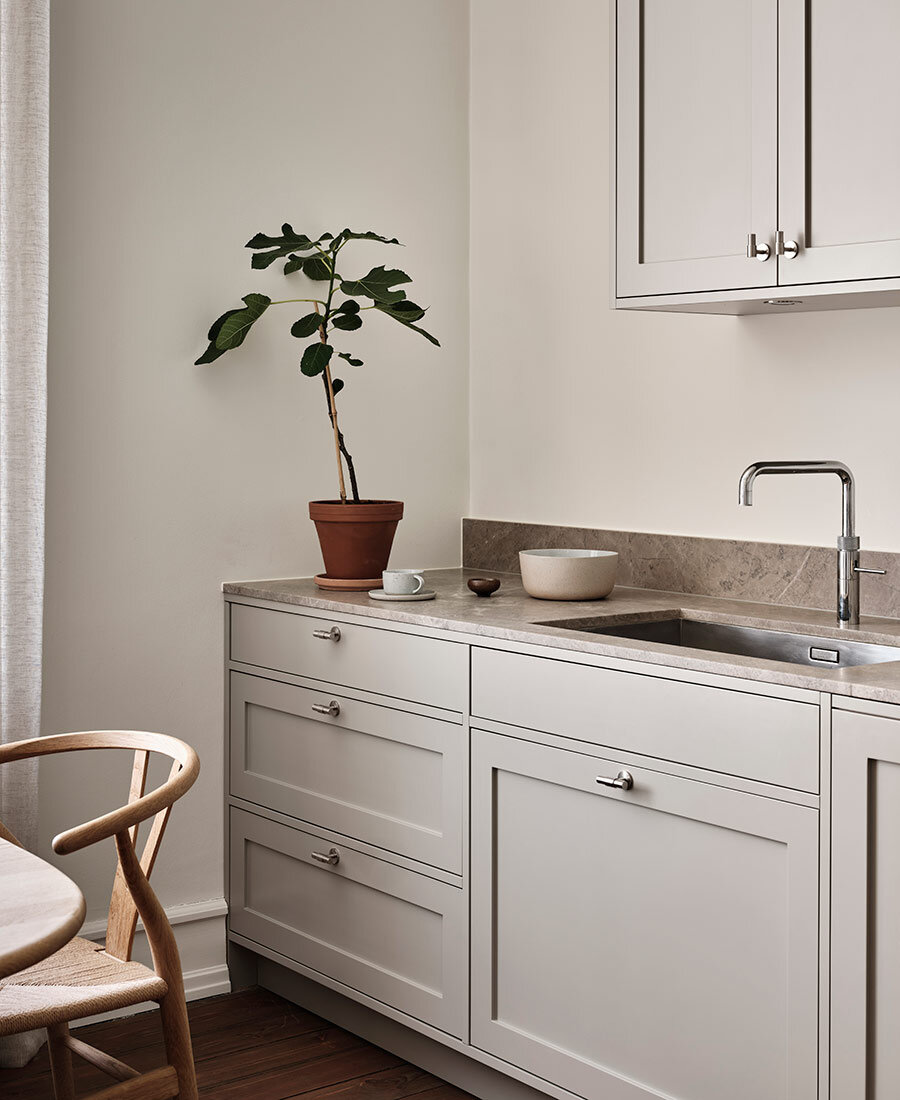The Shaker kitchen - One of the most sought-after styles when it comes to kitchen design. We thought we would take you on a deep dive into this functional, timeless, and eminently beautiful design style. What is the origin of the style? What are its hallmarks? How can you best create your very own dream Shaker-style kitchen? Read all about our Shaker kitchens here.
The history behind Shaker kitchens
The name “Shaker” comes from the creators of the style, name the followers of the religious Shaker movement. The movement started in Europe by its adherents who emigrated to the United States in the last 18th century.
The group believed that the end of human life on earth was near and in the dawning years they wanted to cultivate a pious, functional and simple life for themselves. They practiced the art of craftsmanship and developed a unique style where their furniture and houses were functional and well-crafted without unnecessary flourishes (as these were considered sinful).
They build everything themselves — from their houses to the very tools they used in construction — taking materials from the surrounding area. The group utilized lots of natural colors that were found in nature and incorporated nature-inspired designs into their work. They were such skilled craftsmen and inventors that they stand behind early versions of several tools we still use today for agriculture, carpentry and textile work.
The shakers has a tremendous respect for function and quality — traits reflected in their impeccable craftsmanship. Today the style has thousands of adherents all over the world.
Adapting the Shaker-style kitchen to your own home
Shaker kitchens are characterized by their straight frames and symmetrical design. Everything from doors to cabinets abounds with straight frames to create a symmetrical expression. They also typically use lots of open shelves to create an airy aesthetic.
Every single element is bespoke and adapted to the space in the best possible way. Other signature attributes of a shaker kitchen include discreet knob handles and knob strips. When designing a new kitchen in this style, you can choose to create a very minimalist and subdued space or you can take things in a more classic direction with a turn-of-the-century Scandinavian aesthetic.
Design
At Nordiska Kök, we can help you design a Shaker kitchen that matches your life, your home, and your own signature style. We’re flexible when it comes to color and shape since our kitchens are all custom designed; that means you don’t need to deal with any special dimensions when it comes to frames except when it comes to fitting household appliances. It’s the room and your own preferences that truly set the foundation for the new space.
Because of this flexibility, we can easily achieve the Shaker ideals of symmetry, purity, and quality craftsmanship. By adjusting the width of the cabinets and drawers, you can create that precise bespoke feeling to create a beautiful, harmonious, and enduring kitchen space. You’ll be able to make optimal use of your kitchen. We also help to create a kitchen that is functional at its core — a bona fide reflection of the Shaker principles.
Handles
When craving that classic Shaker style, it’s best to put on your “shaker glasses” as you look at the design and functionality of the space, especially with regard to movement and flow. When it comes to handles, they should be functional and discreet: easy to open while not being too ornate or eye-catching. Simple knobs or cup handles will fit perfectly for this kind of style.
Sinks
When it comes to the sink, functionality is key. It shouldn’t be too small but also not too large; you want something just big enough to wash oven dishes and large saucepans without trouble. One good option is a larger sink mounted on the counter; a rectangular option will pair especially nicely with the symmetrical aesthetic of the doorways. This is a particularly good choice for more minimalist Shaker kitchens.
Another popular option is to use a slightly larger sink in porcelain that is positioned above the counter — that way it’s visible from above as well as from the side. These are perfect if you want to bring a historic touch to your kitchen as long as you have a large enough space to house it comfortably.
Faucets
The secret of a faucet in a Shaker-style kitchen is that it should blend in so perfectly that you hardly even think about it. While a seamless design is crucial, it’s also really important to think about functionality.
Slightly larger sinks should often be paired with faucets that let you rinse the whole basin. You want to be able to angle the water stream even along the edges of the sink. If you prefer a more minimalist route, you can also use a more modern, single-level faucet, perhaps one that matches the surrounding materials. If you are looking to create a more classic aesthetic, you can choose a faucet with an old-fashioned design such as one with two levers or traditional knobs.
Material
Early settlers in the Shaker movement always used materials of the very highest quality. Because they wanted to build their ideal society that would last until life on earth was over, they trained as skilled craftsmen to ensure their work would endure. Their classic kitchen was built entirely of wood found around American cities where the movement gained a foothold.
Oak, maple, chestnut, cedar and birch were all classic materials for their quality furnishings. If you’re looking to make your Shaker kitchen as authentic as possible or would like to have the same kind of craftsmanship and quality, we recommend using ash or oak for your interiors. When it comes to worktops and other details (such as the glass in display cabinets and knobs/handles), we suggest using high-quality natural materials such as stone, wood, and metal.
Color
The Shaker movement appreciated simplicity — anything that was too ornate or colorful was considered sinful. When it came to their homes, the colors were generally muted, utilizing pigments mixed with plant material and clay to create earthy and natural hues.
If you want to create a contemporary Shaker kitchen, you should lean towards softer shades; for something a little more adventurous, you may consider a lighter color. For larger spaces, you could also consider a darker color palette. To create that simple, functional, and symmetrical aesthetic, you could also paint the walls and interior details in the same color or a matching tone. When you order a kitchen at Nordiska Kök, you can have it painted in any color.
Get inspired by more country kitchens.
Five quick tips for creating your own Shaker dream
Take some time to figure out how much storage space you’ll need. List what appliances you’ll want to have on hand and which you can go without. With this information, we can help you design a kitchen that is as symmetrically-designed as possible — all of our Shaker kitchens are site-build, custom-designed, and fully functional.
You may want to consider an open shelving system. The less storage space you need, the fewer cabinets you’ll have to incorporate into the space. Instead, you can focus on open shelves to keep things organized.
Utilize natural materials. Any additions you make to your bespoke kitchen should be fully natural. Stone, wood, and metal all work quite well in Shaker-style kitchens.
Look for inspiration from rooms that incorporate lots of muted colors. These can serve as a strong starting point even if you wind up using different hues all around the space. For example, you can use a lighter shade for the walls and a darker shade for the cabinets while staying within the same color palette. By using a consistent color scale, you’ll create a simpler, cleaner and more harmonious expression.
Decorate your open shelves with all sorts of beautiful details: porcelain tableware, a metal milk jug, or a beautiful wooden cutting board are all stylish and useful details to display. Johanna Bradford’s kitchen is a good example of what we mean. Try to avoid anything too chromatic or made from synthetic materials such as plastic as these might clash with the surrounding space.
Here we have also collected kitchen inspiration, kitchen furnishings, worktops, appliances, tips for kitchen renovation and guides on how to think when planning the kitchen.









